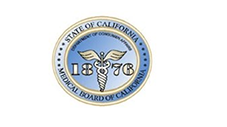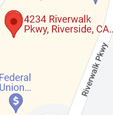Hiatal Hernia
A hernia is an abnormal opening in the wall of a tissue, muscle or membrane that holds an organ in place. The stomach lies below the diaphragm. Hiatal hernia is a condition in which part of the stomach slides through the hiatus, an opening in the diaphragm, and protrudes into the chest. Hiatal hernia is a common condition and commonly affects people over 50 years of age.
Hiatal hernia is of two types:
- Sliding hiatal hernia: Most common type of hiatal hernia where the stomach slides in and out of the hiatus.
- Fixed hiatal hernia (paraesophageal hernia): The stomach moves up into the chest cavity and stays.
Sometimes the hernia may get strangulated, blocking the blood flow to the stomach. This is a medical emergency.
Causes
It is not exactly clear what causes a hiatal hernia. Some of the possible causes may include weakening of the supporting tissues due to an injury, or increased pressure in the abdomen from coughing, vomiting, lifting heavy objects and straining during a bowel movement. The condition may also occur due to a congenital defect where the hiatus is unusually large.
Symptoms
Hiatal hernia may not have any symptoms. Some of the commonly observed symptoms of hiatal hernia include chest pain, heart burn, belching and difficulty in swallowing.
Diagnosis
Your doctor may order the following tests to diagnose hiatal hernia:
- Barium swallow test: involves swallowing a barium preparation, which can be detected through X-rays.
- Endoscopy: allows the doctor to examine the inside of your esophagus and stomach with an instrument called an endoscope, a thin flexible lighted tube.
Treatments
Treatment may not be necessary if the patient is not experiencing symptoms. Treatment is usually started when symptoms occur such as in cases of severe heartburn, when the esophagus gets inflamed due to acid reflux, the hiatus narrows or lungs are inflamed. Your doctor prescribes medications and life style changes to treat heartburn and acid reflux. Surgery is recommended if medications do not work, although it is rare. A hernia repair surgery is usually performed as an open or keyhole (laparoscopic) surgery, where the bulge is pushed back into place, the hiatus is tightened and the stomach is secured into place with sutures.
In open hernia repair, a large incision is made on the chest or abdomen. Laparoscopic hernia surgery is a surgical procedure in which a laparoscope (fibre optic tube with a camera attached) is inserted into the abdomen through a small incision to perform the surgery.



















